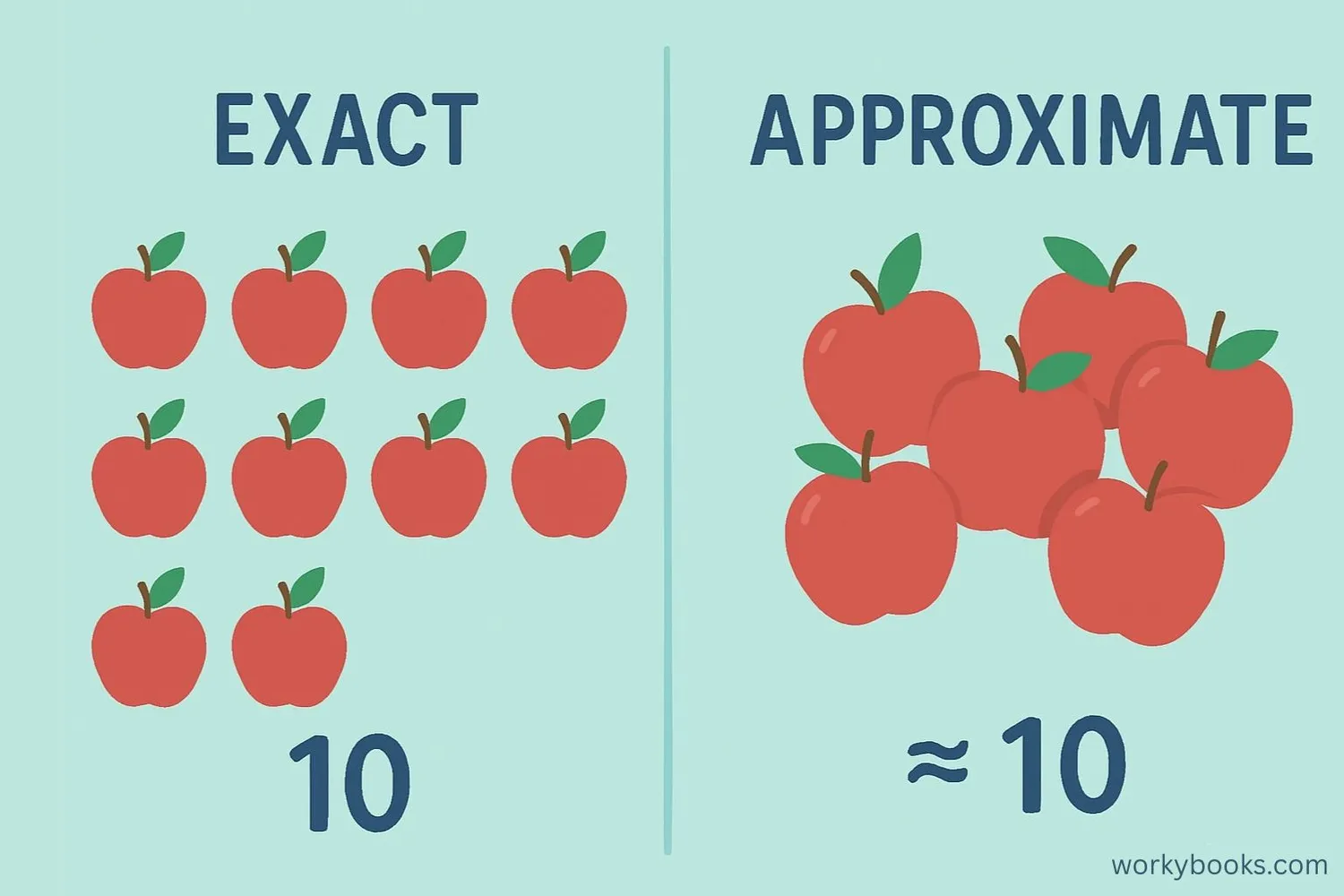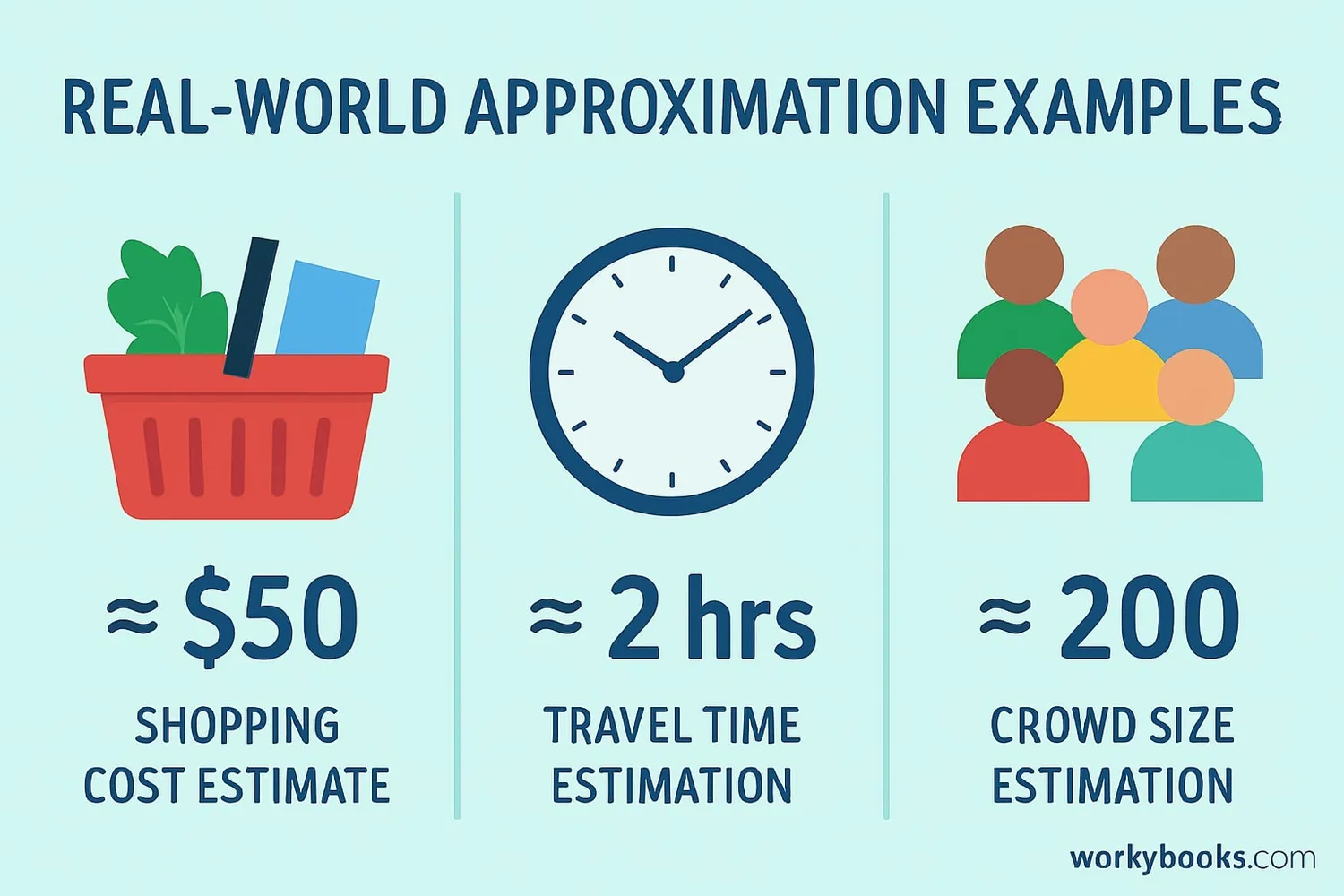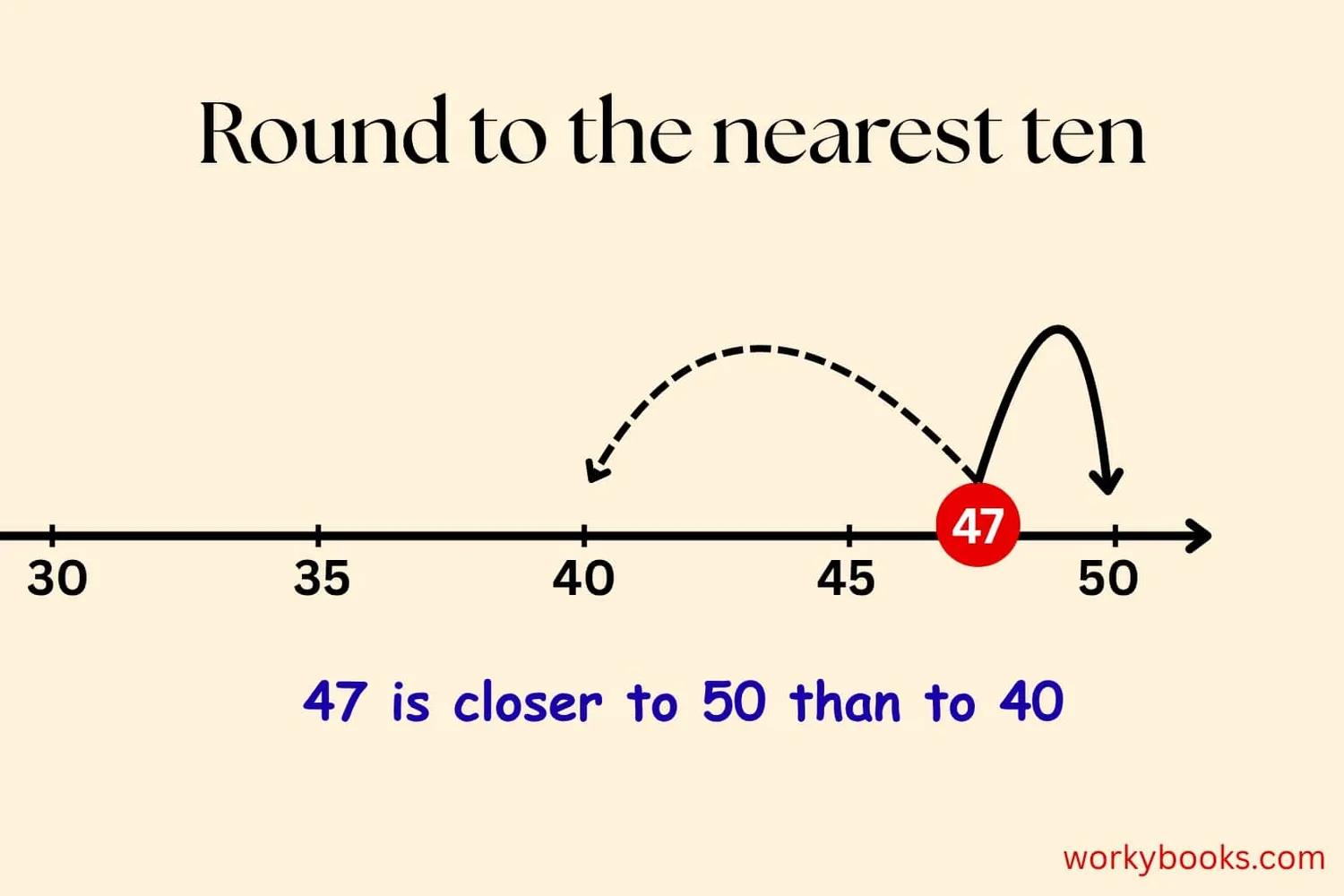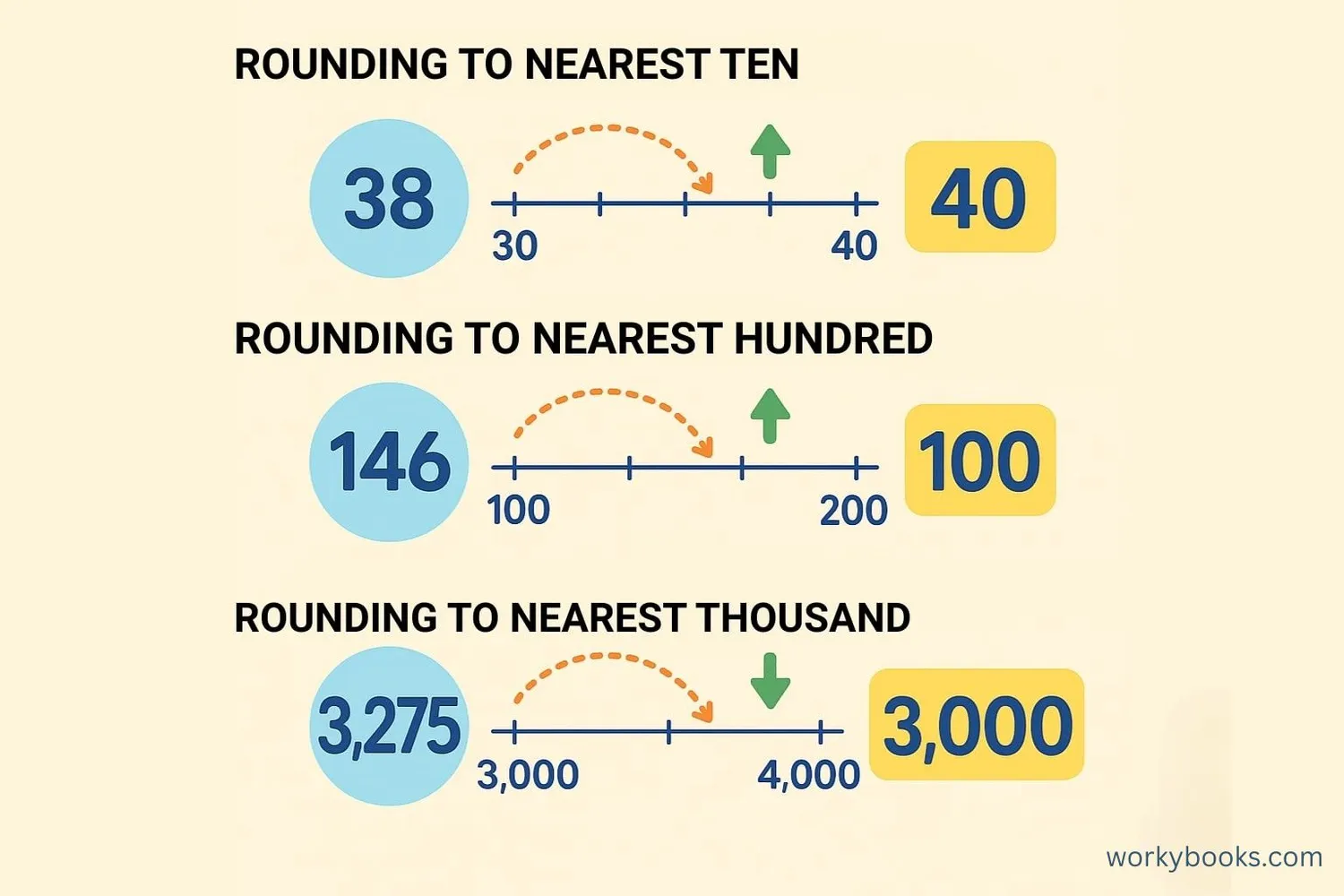Approximation - Definition, Examples, Quiz, FAQ, Trivia
Learn to estimate and round numbers with easy explanations and practice activities
What is Approximation?

Approximation means finding a number that is close to the exact number, but easier to work with or remember. It's like making a good guess that's almost right!
We use the symbol "≈" to show approximation. For example, if we have 47 apples, we might say we have about 50 apples. We write this as: 47 ≈ 50.
Approximation helps us:
- Make math problems simpler
- Estimate answers quickly
- Understand large numbers
- Make good decisions when we don't need exact numbers
Key Concept
Approximation is about finding a number that is close enough to the exact number for what we need to do.
Why We Approximate

We use approximation all the time in everyday life! Here's why it's so helpful:
1. Quick Calculations: When shopping, you might add prices in your head: $3.95 + $1.75 ≈ $4 + $2 = $6 (actual is $5.70).
2. Understanding Large Numbers: If a park has 2,345 trees, we might say "about 2,300 trees" to make it easier to understand.
3. When Exact Numbers Aren't Needed: If you're baking cookies and a recipe calls for 250ml of milk, using about 250ml is fine - you don't need to measure exactly.
4. Making Predictions: Weather forecasts often use approximation: "There will be about 10mm of rain tomorrow."
Remember
Approximation is especially helpful when you need to do math quickly in your head!
How to Approximate Numbers

The most common way to approximate numbers is called rounding. Here's how to round numbers:
Rounding Rules
Step 1: We're rounding to tens place → 4 is in tens place (47)
Step 2: Look at digit to the right → 7
Step 3: Since 7 is greater than 5, round up → 47 ≈ 50
Rounding Tip
Use a number line in your mind - if the number is halfway or more to the next ten, round up!
Approximation Examples

Round 73 to the nearest ten:
- Look at the ones place: 3
- 3 is less than 5, so we round down
- 73 ≈ 70
Round 348 to the nearest hundred:
- Look at the tens place: 4
- 4 is less than 5, so we round down
- 348 ≈ 300
Round 2,567 to the nearest hundred:
- Look at the tens place: 6
- 6 is greater than 5, so we round up
- 2,567 ≈ 2,600
Sarah has 58 stickers. Her friend has 32 stickers. About how many stickers do they have together?
- Round 58 to the nearest ten: 60
- Round 32 to the nearest ten: 30
- 60 + 30 = 90
- They have about 90 stickers together
- (Exact number is 58 + 32 = 90)
Practice Tip
Try rounding numbers you see every day - page numbers in books, prices at the store, or the time on a clock!
Approximation Practice Quiz
Test your approximation skills with this 5-question quiz. Choose the correct answer for each question.
Frequently Asked Questions
Here are answers to common questions about approximation:
Math Trivia
Discover interesting facts about numbers and approximation:
Ancient Rounding
The concept of rounding numbers dates back to ancient civilizations. Babylonians used rounding in their base-60 number system over 4,000 years ago for astronomy calculations.
Pi Approximation
The number π (pi) is approximately 3.14, but mathematicians have calculated over 62 trillion digits of pi! For most calculations, 3.14 is precise enough.
Space Estimation
NASA uses approximation all the time! When calculating rocket trajectories, engineers often round numbers to make complex calculations manageable before doing precise calculations.
Fast Estimation
Some people can estimate large quantities very accurately. The world record for estimating the number of objects in a container is held by a person who guessed 8,772 jelly beans in a jar - the actual count was 8,786!


